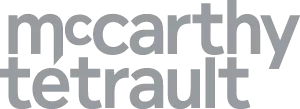Companies now have a greater opportunity to streamline across multiple jurisdictions their reporting on efforts to prevent forced and child labour in their supply chains. Although Canada's Fighting Against Forced Labour and Child Labour in Supply Chains Act (the "Supply Chains Act") was enacted in 2023, the United Kingdom and Australia have both had legislation in place since 2015 and 2018, respectively. Acknowledging that many organizations with international operations may be subject to reporting in multiple jurisdictions, the Government of the United Kingdom, the Government of Australia, and the Government of Canada have jointly released a multi-jurisdictional reporting template (the "Template") that seeks to reduce the administrative burden of reporting in all applicable jurisdictions.
In this client alert, we provide an overview of this new Template and also discuss some of the key considerations on its use. For further information on the application of the Supply Chains Act, please refer to our previous client alert (Modern Slavery Alert: Public Safety Canada Makes Significant Changes to its Guidance on the Supply Chains Act). We have also prepared an updated guide on complying with the these reporting requirements that can be requested here: Modern Slavery: A Guidebook on the Reporting Requirements Under the Fighting Against Forced Labour and Child Labour in Supply Chains Act.
Template Content and Approach
The Template groups legislative reporting requirements among the jurisdictions into seven overarching requirements:
- A description of the organization's structure, operations, activities and supply chains, including consultation with any linked organizations covered by this statement
- A description of the organization's policies in relation to modern slavery, forced labour and child labour
- A description of any risk management processes in place to assess and address the risk of modern slavery, forced labour and child labour practices in the reporting organization's supply chains
- A description of the organization's due diligence processes in relation to modern slavery, forced labour and child labour in its supply chains. In addition, a description of any measures taken to remediate any instances of modern slavery, forced labour and child labour in its supply chains
- A description of the training provided to employees on modern slavery, forced labour and child labour
- A description of how the organization assesses the effectiveness of the actions it has taken to prevent and respond to modern slavery, forced labour and child labour, and its due diligence processes
- Any other information the organization considers relevant to the spirit and intent of the legislation
Expectation of Continuous Improvement
The Template encourages proportionate risk-based reporting, whereby organizations use the level of risk to inform the level of detail provided in the report. The template also encourages progress year-on-year by splitting reporting requirements into Level 1 and Level 2 requirements:
- Level 1: information that organizations should disclose in their statements and annual reports under UK, Australian and Canadian transparency legislation
- Level 2 (recommended): information that organizations can disclose in addition to Level 1 disclosures to demonstrate progress and leadership in supply chain transparency. As organizations become more familiar with the reporting requirements, they are encouraged to review and implement what is outlined in the Level 2 category. This will demonstrate continuous improvement and commitment to eradicating modern slavery, forced labour and child labour in their supply chains
At a high-level, the levels of disclosure are distinguished within the overarching themes as follows:
|
Reporting Theme |
Overview of Level 1 Disclosure |
Overview of Level 2 Disclosure (includes all Level 1 items and the items below) |
|
Organizational Structure & Supply Chains |
Describe organization's structure and overview of its supply chain. Describe the organization's products and sector(s) of operation, provide an overview of its direct and indirect suppliers, and unknowns. |
Detailed map of supplier relationships, indirect supplier mapping, labour supply chain structure, engagement with industry initiatives, non-governmental organizations etc. |
|
Policies |
Summarize internal policies, link to international standards, list stakeholders involved. |
Summaries of each policy, implementation details, monitoring, supplier policies, communication strategy. |
|
Risk Management |
Disclose timing and governance of risk assessments, list priority risks, stakeholder engagement. |
Complete risk register, leverage analysis, continuous worker engagement, supplier partnership improvements. |
|
Due Diligence & Remediation |
Summarize actions to prevent/mitigate exploitation, grievance mechanisms, remediation steps. |
In-depth description of actions taken to address issues in supply chains, unintended consequences, detailed remediation mechanisms and outcomes. |
|
Training |
Outline internal and external training content, objectives, numbers trained, and development source. |
Comprehensive training program, tailored content, sector-specific risks, supplier training, continuous improvement. |
|
Effectiveness Assessment |
Set goals and Key Performance Indicators, disclose governance, use data to assess effectiveness, success stories. |
Sector-specific goals, case studies, direct worker engagement, proactive monitoring and adaptation. |
|
Other Relevant Information |
Comment on year-on-year progress, challenges, and additional relevant information. |
Forward-looking statements, improvement steps, relevance of additional information. |
The Template indicates that each jurisdiction expects organizations to take a "continuous improvement" approach to compliance, meaning organizations' statements should improve in quality and demonstrate progress over time, including progressively achieving Level 2 reporting where possible.
Use of the Multi-Jurisdictional Template
Public Safety Canada ("PSC"), which administers the Supply Chains Act, has released additional guidance accompanying this Template, noting that although this optional template seeks to build bridges between overarching themes, organizations should review the governing legislation and government-specific guidance to confirm their obligations before submitting their report. The guidance highlights as well that each jurisdiction continues to have distinct definitions, administrative requirements, and reporting deadlines that must be accounted for.
For example, Canada's reporting deadline is set at May 31st of each year, whereas the reporting deadlines for both the UK and Australia are not fixed dates but are driven by the end of the financial year of the reporting entity. Differences in approach such as these can make multi-jurisdictional reports difficult to produce. Another important consideration is to ensure that the relevant attestation/certification requirements for each jurisdiction can be met in one report. Finally, reporting entities should consider whether the joint report can adequately speak to their operations in each relevant jurisdiction, or if their operations, compliance procedures etc. are so different that a joint report would be difficult to produce.
To view the original article click here.
The content of this article is intended to provide a general guide to the subject matter. Specialist advice should be sought about your specific circumstances.







